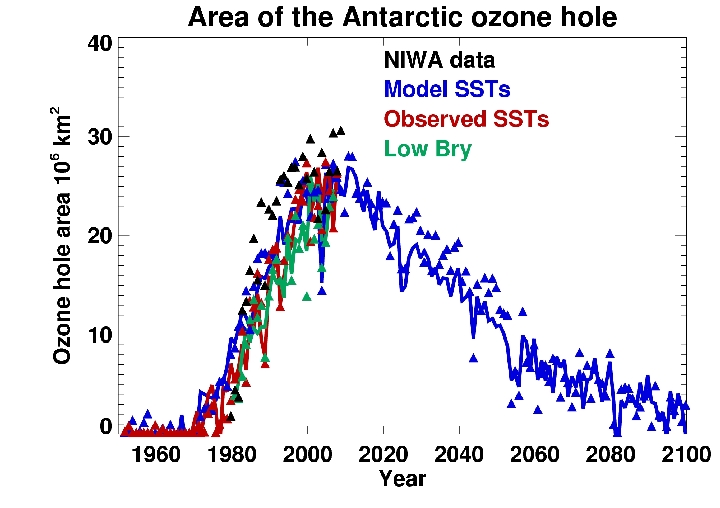Research Highlights October 2010 : Austin and Wilson
Study by John Austin and R John Wilson on the Sensitivity of polar ozone to sea surface temperatures and halogen amounts.
The results of the simulations of Austin and Wilson (2010) suggest the importance of including a coupled ocean on stratospheric processes as well as realistic bromine amounts, including the very short lived species. The figure shows the calculated area of the ozone hole (colored lines and triangles), together with observations (black triangles). With SSTs from the CM2 coupled ocean-atmosphere experiment, the simulated ozone hole (blue) tends to be slightly larger (by about 6%) than simulated with observed SSTs used as forcing (red curve and points). For the low Bromine simulation (green), which corresponds approximately to just the long lived bromine species, the ozone hole was smaller by about 10%. Recent model developments have eliminated the small but significant bias between observations and model results shown in the figure below.

Reference:
Austin, John, and R John Wilson, 2010, Sensitivity of polar ozone to sea surface temperatures and halogen amounts. Journal of Geophysical Research, 115, D18303, doi:10.1029/2009JD013292.


